|
This week we took another leap forward. Version 6 of our planning, if you will(here is the post about our previous iterations with resources).
We began using Google Sheets and Google Keep to help us stay organised - and couldn't be happier with the week 1 results! I have been looking for a way to do this in a meaningful way since the beginning of the school year, and think we have found the answer... for now at least! First I moved all of our musts, shoulds, and coulds onto Google Keep. This was a good learning process. I have shared individual lists with students, and also tagged their names on my end so I can search for them easily to check in with what they have done so far.
Then I made a Google Sheet for each of them, with a template for planning 3 acts a day, as well as an "if I have extra time" section. I have taken away the timetable aspect of this in hopes that they will be more focused on their weekly goals as opposed to WHEN they are doing things in the week. But it is still timetable related, in reality.
As before, on Mondays they plan their workshops for the week. Then every morning they plan what else they will do with their day, keeping a responsible balance of technology in mind.
This could eventually be shared with parents as well, if we want to. Individual weekly goals are at the top as a reminder of what they are working on this week. Originally I left room for a reflection, but we have been doing that on Seesaw instead (with a screen shot of their weekly goals as the main post, and reflections as a comment each day). Students made some PicCollages with reasons why digital planning is better than paper planning.
I would like to add to this that on the iPad as well as on the computer they can have Google Sheets open to see their planning at the same time as having Google Keep open on the side. This makes multi-tasking super easy for them to inform their daily/weekly planning.
So far, this seems to be a great advance for us. Do you do anything similar?
1 Comment
Until recently (like, last week) backwards design felt right. I always tried to have the end in sight and figure out with the students what learning engagements they could encounter to get to that end. "Best practice," right? On my path for more agency with my students I am beginning to question this. Our new unit is really what is making me think more about it. Here is some background information about the unit, if you are interested. How We Organise Ourselves CI: Technology is an integral element of our lives LOI1: Responsible consumption of technology (Responsibility) LOI2: The positive and negative aspects of current technology (Reflection) LOI3: The advances that technology has enabled (Function) We keep trying to think of a summative assessment for this unit... where are we going with this? What do we want them to accomplish or know? How can they show this? We have had multiple thoughts from "how to" videos showing online safety, to blogs with comments and questions from students safely and positively interacting with each other, to a "show what you know" type thing where they can just tell us (in any form) what they know about the central idea and lines of inquiry. We are also toying with the idea of bringing in the Sustainable Development Goals and having the central idea and lines of inquiry be the driver/lens for it. Of course formative assessment is key. I don't want to ignore that fact. We need to be monitoring student actions and knowledge of all lines of inquiry as we go. But if students with agency are choosing their own paths for their learning, should we be contriving a summative assessment for them based on what we think is best? Is this fitting student needs or ours? I suppose the "backwards design" is starting with the why. Why is this unit important... For us this means why do we need students to know about how technology is an integral element of our lives? Why do we need students to know how to consume technology responsibly? Why do we need students to know the positive and negative aspects of technology? Why do we need students to know the advances technology has enabled? It is a hard one because really it is for their current and future use of technology in their own lives inside and outside of school. The real summative assessment is if they are actually using technology safely and positively as they get older, after they leave our classrooms. Maybe the "show what you know" is the best option for now? Maybe a mini portfolio of examples of their positive tech use and knowledge in the unit? Aren't the central idea and lines of inquiry what we want them to accomplish or know? Should we use that for our backwards design thinking instead of a summative? I'm not sure where we are headed, but if students reflections along the way show their knowledge, I am not sure we need to contrive a fake summative for them. Do we?
Today is my one year anniversary on Twitter!
It feels like so much longer. Not in a bad way, of course. In an amazing way!! I have grown so much as an educator and critical thinker. The connections and advances I have made because of my PLN are plentiful. I can 100% say that I would not be in the situation I am in right now (or heading towards) if I had not joined Twitter one year ago today. I would like to thank all of my Twitter connections for being open with their sharing and commenting to help everyone around you grow. If anyone out there is debating it: dive in!!
As I continue my #OneWord2018 quest of being more "open" I am having some tough thoughts today.
Unlearning "How to be a Teacher 101" is hard! I am definitely being more open with my students and seeing amazing benefits. Sometimes, though, this still is not my first instinct. Today's example... I have been feeling the need for our reflection wall to progress to a digital version so they can really see their progression and export it at the end of the year as an iBook to show their grade 4 teacher, etc. Currently, this is what our reflection wall/window looks like:
This is working fine, but we couldn't see where we were, where we have progressed to, or where we wanted to go.
With Apple Pages new update, we are able to collaborate and also export as an ebook. Page A was made to mimic our existing reflection wall which is fine - a continuum of gradual independence for a certain skill (thank you to @OrenjiButa for the art work we have been using all year for reflecting on ATLs and gradual release of independence which we took ownership over by choosing meaningful descriptors from other classes). I had two versions of page B which I could not decide between. One very structured page (my first version) and one blank page with the title of reflections and goals where they could choose how to reflect. Version One:
Version Two:
Because I am trying so hard to allow room for agency, part of me was saying to use the second version. But I wasn't quite sure. I was asking teachers and kept thinking about it... until embarrassingly late in the game I finally thought to ask the students.
They surprised me. They want choice, they want flexibility, but their VOICE right now was telling me they wanted structure for this book. They thought it was much more clear. There was a small part of them worrying about running out of room with this option, but I told them we can deal with that when we get there. Their ownership of this is growing, and if I had chosen the more open-ended version for them like my "push for agency" self was trying to say they would have been lost (I could see the panic and confusion on their faces when they saw the second version). For now, we chose structure for this particular activity. If we had started this at the beginning of the year I could see how it might change into the second version, but with three months left of the school year I am not sure. If we need to change, we will change. I have made pages for all ATLs and also for the areas which will appear on their report card at the end of the year, hoping their reflections will assist and align with the report card process. My takeaway for today is to keep trying to make a habit of asking them first. I am well on my way but this could have been a big loss for us, had I not asked them. It is hard. I try things myself. I then push to collaborate but still my first instinct is still the adults of the school. Not the ones using the tool I am creating. I am growing. How are you unlearning your teacher instincts? Three days of PD and so many things to follow on Twitter over the past week... Learning2 Europe, IB Conference in Singapore, Apple Education Event announcements.... I'm exhausted, but want to write this blog post while I am still on a high! Over the course of the year our staff have been speaking up and asking for different types of PD. There was a general frustration about how we were spending precious time. This week we had 3 days of PD scheduled while students are away for Spring Break before we began our own. A week or two ago, our PYP coordinator put out a Google Doc asking if anyone would like to present, as well as the types of things people would like to learn more about. Being someone who just dives in, I of course signed up to speak about student agency. Yesterday was a day full of learning from one another - it was fantastic! I struggled for a little while to wrap my head around how I was going to present my workshop. I had read @Makingoodhumans going through the same journey of leading a workshop about agency. I had the same belief of trying to get staff to really experience agency while learning about it. (Side note: I already plan to make Student-Led Conferences a similar experience for parents with their children, and was drawing off of that plan for inspiration as well). As usual, once the idea hit I couldn't stop thinking about it. I structured the PD the same way I structured my class. Choose, then act, then reflect... with a little bit of time in the beginning to speak about agency in a broad sense and give the small amount of structure that the teachers needed to know what to do. This is what the schedule for our session looked like:
The teachers had 4 very open-ended options to choose from for their "act" time. This is something I might have done near the beginning of this journey with my students. I had a document with a few link suggestions to start them off if they needed/wanted it.
Participants also had a list of musts, coulds, and shoulds, similar to what my students would have. I usually make these types of lists/agreements with my students, but again because of the "beginner" aspect of the teachers in the workshop (and lack of time) I provided them with the following checklist:
Another bit of a side note here: I had barely even started the workshop when our Tech Integrator (sitting in on the workshop) was already emailing me to pick my brain about the process because he wants to use the structure (agency) in his future PD sessions. Win number one!
They did their research for roughly 35 minutes and I made sure to have a bit of an accountability aspect in their "must" list. I also thank Taryn BondClegg again (@Makingoodhumans) for sharing her list of resources with me to share with the staff as an option for their research. We also started to curate our own list (voice and ownership)! Teachers shared with their grade levels (I had to cut them off) and then I showed them how I interpret student agency and the journey I have been on with my class. I made it very clear that I wanted them to take things away as bits of inspiration (hopefully) to adapt and use as they might see fit for their own class. If I had different students, the routines we have really might not look the same way as it does right now. I wanted to be sure that they knew I wasn't expecting them to take away exactly what I was doing and replicate it. This is also why I got them to research examples of agency before I shared my own experiences. Ideally, I would have loved to have my class there to explain our routines themselves. Being Spring Break, I settled for making and showing a video of my class routines and then I spoke a little more about workshops. This turned into a section of Q&A I really didn't expect or plan for, but could feel their need and want for it. We then did personal reflections about what they could start implementing for themselves, as well as identifying what ATLs they used during that session and that was that! Except I hope it isn't! I have had incredible feedback from them as well as "second hand compliments" from teachers who weren't even in the workshop. I have received emails of thanks, and "complaints" that people can't stop thinking. Yes!! Mission accomplished, I think! People are thinking... hopefully adapting... hopefully diving in...
I can tell you right now my group did not do that. Even though they had all been to this zoo before, they were all too excited to apply their new knowledge of animal adaptations to the actual real world. They rushed to see the leopard's spots, and ran to see the brown bear's first day out of hibernation. My little group of 6 boys were having a fantastic time exploring the things they wanted to see. We naturally talked about habitats, body coverings, and why so many snakes were still sleeping. The paper, pencils, and clipboards were just something to carry around. Worksheets were not touched. Should I have pushed it? My gut said no. But what if we were the only group not to do anything on paper? My gut still said no. They needed to experience the zoo.
We had lunch by the puffins before meeting our tour guide at the aquarium. I swear, our whole trip could have been in this tiny aquarium. We would have been able to stand there in awe, admiring all of the colourful adaptations and odd shapes for an hour or more. The tour guide was amazing, but the kids just wanted to be kids. I will fully admit that even I was distracted by the fish while she was talking. A moray eel made an appearance and was highly distracting for me! This happened again at the monkeys, and again in a jungle room we sat in where a mouse-deer appeared out of nowhere (one of the weirdest things I have ever seen)! I definitely also saw other students lose interest at various different points. Was it worth having a guided tour where students were forced to stand in one spot and listen to someone talk about something they may or may not be interested in?
When on a trip, can the students not just enjoy?
Could we maybe just make them aware that they will do some sort of reflection of their choice afterwards to make them accountable and to think about their learning? Could they document the trip and their reflection in any way they want? Could the students let us know where they want to go and what they want to do there (and why they are there)? On that note, with some misconnections on public transport some students were actively looking at maps and timetables. Could they plan our route? Our day? We are already toying with the idea of giving the planning duties over to them for our next trip. Do we underestimate what 9 year olds are actually capable of? Re-posted (with a couple of edits) on https://ibeducatorvoices.wordpress.com on April 5, 2018. 
Let's face it. No matter how much we want to observe other classrooms in our school to share and collaborate on ideas and "best" practices... we don't always have time.
This week I have done two things to try to break those barriers a little bit. Next week we have some in-house PD which I have signed up to share a little about student agency and the routines in my classroom. 1. I have made a feedback #ObserveMe form on Google Forms. There are only 4 basic questions, two of which are linked to my appraisal goals discussed with the senior leadership team (student agency and conceptual thinking). This was not something expected of me, but I am looking for ways to grow. I have only sent it to a few people so far, who often pop into my classroom, but look to at least share the idea at the PD session in case anyone else is wanting to come see what happens in my room.
2. My class made a video about our daily/weekly routines with "Choose, Act, Reflect."
I also plan to share this next week with the teachers here, but thankfully before making it I thought to seek permission from the parents to see if they would allow me to use videos/photos of their child's faces, voices, and work on social media. 7/12 agreed (lots had reasons to do with diplomat parents), so those are the students which are featured in the video. Please leave comments for us on ways we can improve or (hopefully) ideas it has inspired you to try in your own classroom.
In my last blog post I wrote about all of the iterations it has taken me to get my class where they are. Today another grade 3 teacher came in to observe, and we briefly discussed how jumping straight to the timetable we are currently on probably wouldn't work. I think that as the teachers go through this growing process, so do the students. Scaffolding this slow release of control can be messy, but the payoff is amazing.
I started today wanting to get more out of our reflection time. Not only more time for students reflecting but also thinking forward, and preparing our room for the next day so our environment will be ready for us. I also knew that they were ready to take on more responsibility for owning their room. Setting up for the future, and tidying up the past.
I began to make a checklist of things we could do during Reflect Time each day. As I thought more about this, I began to realise that each chunk of our day has certain things we need to remember and be thinking about. I brought the idea to my students and we created a sort of set of reminders for each chunk of our day. Again, iterations will happen. Already after day 1 we have thought of things to add!
Next steps for us: more collaboration. At the moment I feel like the students are choosing a lot of independent activities. To be honest, at first was ideal for me as we were wrapping our heads around all of the activities. However, was it ideal for the students? Maybe. In the way of settling in to this new routine. Now that these structures are in place I can focus on ways to encourage more collaboration.
My focus this year in my classroom is responsibility, independence, and choice as a path towards agency. This post is to document the scaffolding I have gone through with my grade 3 class this year as we travel along this path together.
It has been a winding journey, and if anything else, I know that my students are witnessing and experiencing true iteration. They have noticed, and even began to collaborate with me on, changes to our planning. As most classrooms around the world, at first our days were planned wholly by me. Then one subject a day was planned by them, slowly building to what we now call 3 "acts" a day which are planned by them. I would like to document and provide these iterations to any teachers wishing to use/adapt them to their own classroom settings. Here is a Google Drive folder where you can find PDF and editable Pages and Word versions of all of these documents (please note these were made in Pages so may not always align properly in Word). A little background information is that I am not working with a team of advisors like #Studio5 at the International School of Ho Chi Minh City are. This model has been my inspiration for my classroom, but it is just me working with my 13 grade 3 students on a modified version that is working for us, and slowly changing every week. Version 1
Our first step was to try this model in Guided Reading sessions only. I knew that my students understood the roles and expectations in GR lessons already, so I felt like this was a great first step for them.
We made a collaborative table that included what they must do (every week), should do (every week or two), and could do (extra time) during a week. At the beginning of the week they would plan all of their GR sessions for the week, including which ATL they were using for that session. For the first week I did not hold any workshops, so that I could attend to any needs or questions as they worked independently. After that, I had one Guided Reading workshop per day for them to sign up for one in the week. Version 2
Once we were comfortable with this routine, we began to plan the same way for math sessions. We created a table of musts, shoulds, and coulds again, and I held 1 reading and 1 math workshop per day, when possible.
In reality, this meant a few different planning papers floating around trays each week... this version did not last too long, even though I had formatted a writing workshop in the same way as preparation for when they would be ready (also in the Google Drive folder of resources.
Version 3
Because there was now multiple papers for each week floating around, I decided to create a weekly timetable for students to fill in. It meant smaller space for them to plan in, but because they were used to this type of personal planning by now, it wasn't too bad for them.
For this iteration, we kept the tables we already made for math and reading workshops/choices. We were not quite ready to incorporate writing into these formats just yet. We started with 1 math choice per day but we learned very quickly that an hour doing the same thing was just too much (especially if they chose something on an iPad). We quickly changed this to 2 math choices, 20-30 minutes each, depending on the day. This works really well for my students. Version 4
This is the version we are currently on. As a class, we decided on a few things together in order to make these changes. The students decided that a checklist for each of them might be easier than looking at the different subject's must, could, should tables all of the time. We also decided to get rid of "math time", "reading time", etc. because students were wanting to do spelling tests, etc. at different times in the day, and also getting confused about which workshops they were doing when. Students can now choose to do anything at any time, but are encouraged to do one math, one reading, and one writing activity per day (if it doesn't work out that way, oh well!) and ensure that tech usage isn't too heavy in one day.
We looked at the Action Cycle (Choose, Act, Reflect) and decided that our mornings would be time for CHOOSING, our so called workshops would be ACT 1, ACT 2, ACT 3, and at agenda book time we would REFLECT on the day. This also came about because we realised that everyone wasn't doing "workshops" all of the time. Workshops were with me, the teacher. On a Monday morning we now choose the workshops for the whole week (as you can see in the checklist, everyone needs 1 AOK math workshop, 1 Application math workshop, 1 reading workshop, and 1 writing workshop). The rest of our activities are planned daily, checking off what we do at reflection time, and writing some sort of daily reflection in their agenda books as well. This is this weeks schedule, so it has some particular items included in the timetable, but you can get the idea.
So far, these iterations are working for us. I am sure that by the end of the year it will look even more different than this. Students and parents are both noticing that both independence and responsibility are improving.
Are you doing something similar with your class? Do you have any thoughts or ideas on how we can improve? Version 5 (Added March 1)
It has only been 1 week since we started using version 4. First thoughts are... WOW their time management skills have SIGNIFICANTLY improved!!! With the checklist always beside their planning they really are learning to prioritize, sometimes even more than I would!
After careful consideration and conversation with my grade 3's, we also decided to split the "should" list. So starting next week there are should's for our week A timetable and then different should's for our week B timetable. Version 6 (April 19, 2018)
See this post for version 6... spoiler alert, we've gone digital!
I'll admit, I am not really much of a reader.
It is hard for me to get into a book, especially during the school year. In the summer I might get through a book or two, when I am really feeling like I have time to relax while travelling. This being said, a number of teaching pedagogy books have caught my eye recently, and I have been extremely motivated to read. I ordered 4 books at the beginning of February and I am already finished 3.5 of them! Most of the books which caught my interest are published by Dave Burgess Consulting.
As soon as I finished, I was excited to dig in to Empower by A.J. Juliani and John Spencer. I read this book in less than 24 hours. I was incredibly hooked with the message and simplicity of this book. The launch cycle it provides for innovation and empowerment is definitely something I would like to be more aware of in my strive to provide a student-led classroom. Launch is another book they have written, which is on my list! Then I read Teach Like A Pirate by Dave Burgess himself (the owner of the publishing/consulting company). I will be honest, this one did not feed my interest as much. I ended up skimming the last 3/4 of the book because I felt that he was more focused on entertaining his high school students than providing them with independence, leadership, and agency. He fully admits this in the foreword of the next book I read, which I did find to be redeeming after the book wasn't what I wanted it to be. I am now currently reading Learn Like A Pirate by Paul Solarz. THIS is much more up my alley. I am only a few chapters in, but can already tell that his passions and interests are more suited to what I want in my classroom. I am feeling the need to take this one a bit slower. Not for a lack of interest, but because I want to digest his suggestions and really let them sink in. I have an ever-growing list now that I've been inspired to read about pedagogy! Launch Kids Deserve It Shift This Social Leadia The Power of Inquiry Dive into Inquiry Inquiry Mindset Lifelong Kindergarten Learner Centered Innovation Anything else do add? Particularly to do with inquiry and student-led classrooms promoting agency? |
Cindy KaardalPassionate Educator and Innovation Coach. Archives
December 2023
Categories
All
|









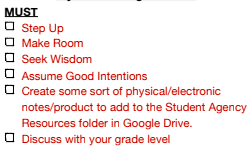



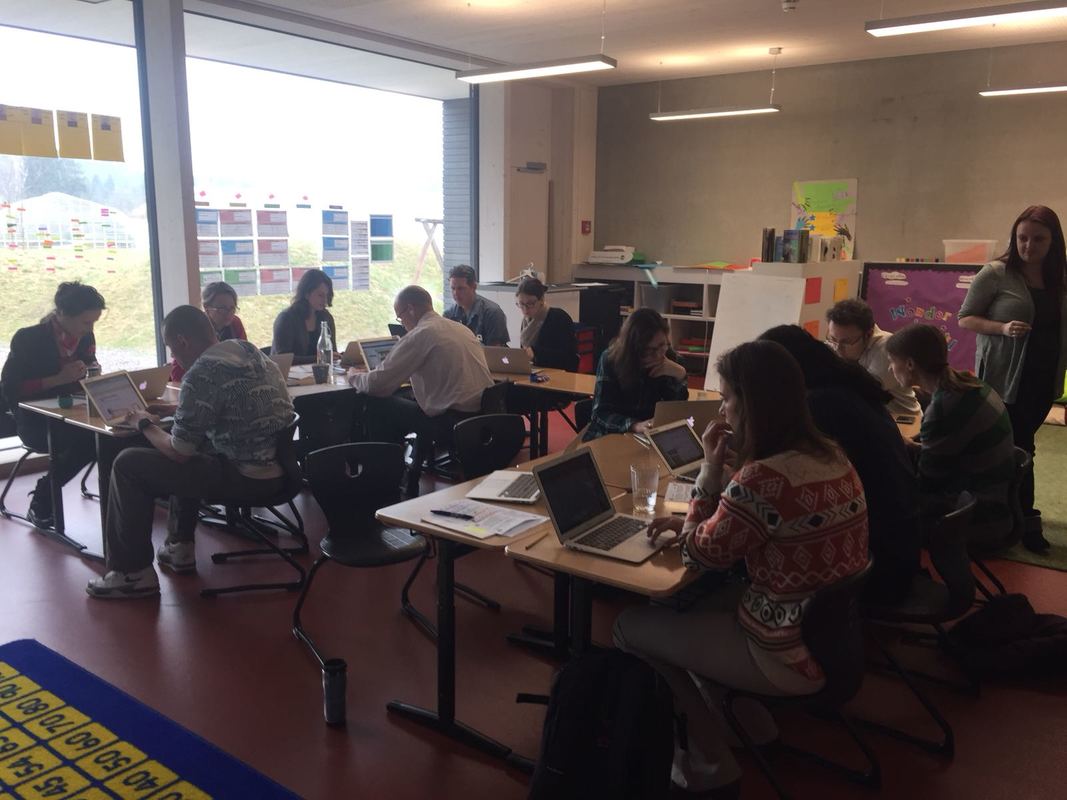
























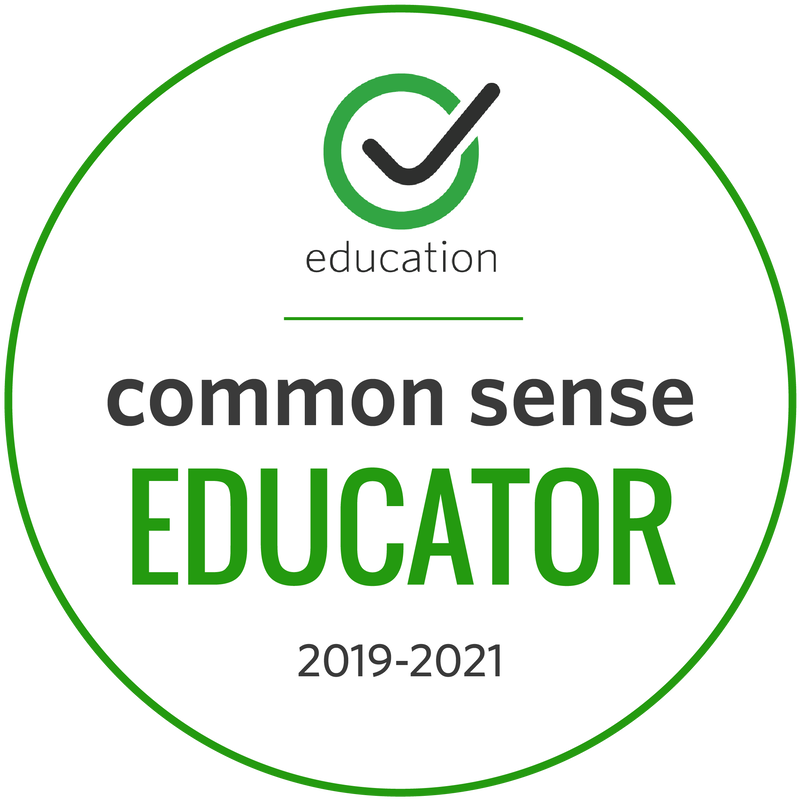
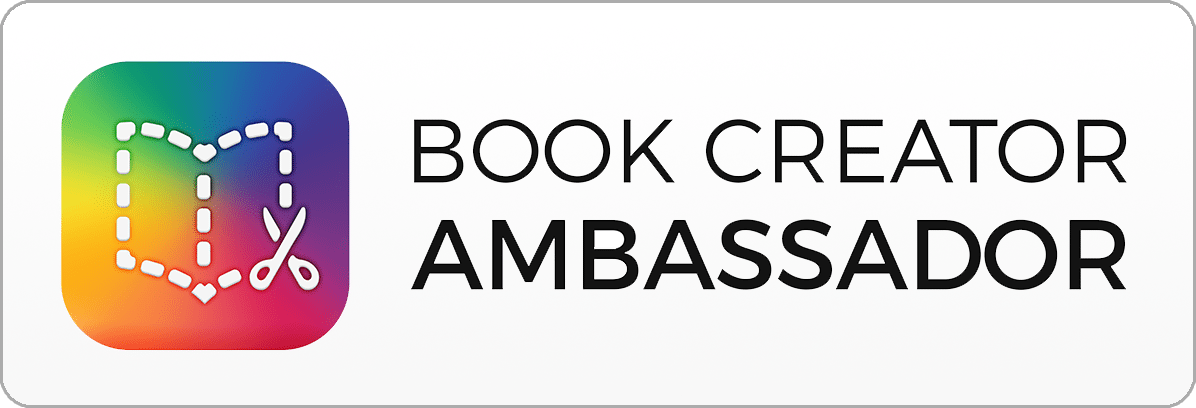
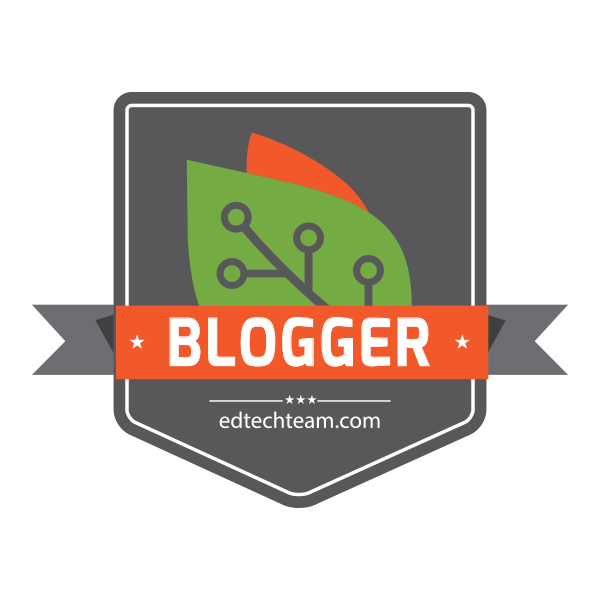

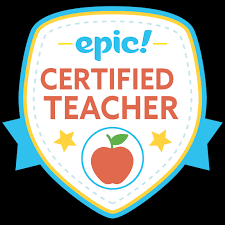

 RSS Feed
RSS Feed